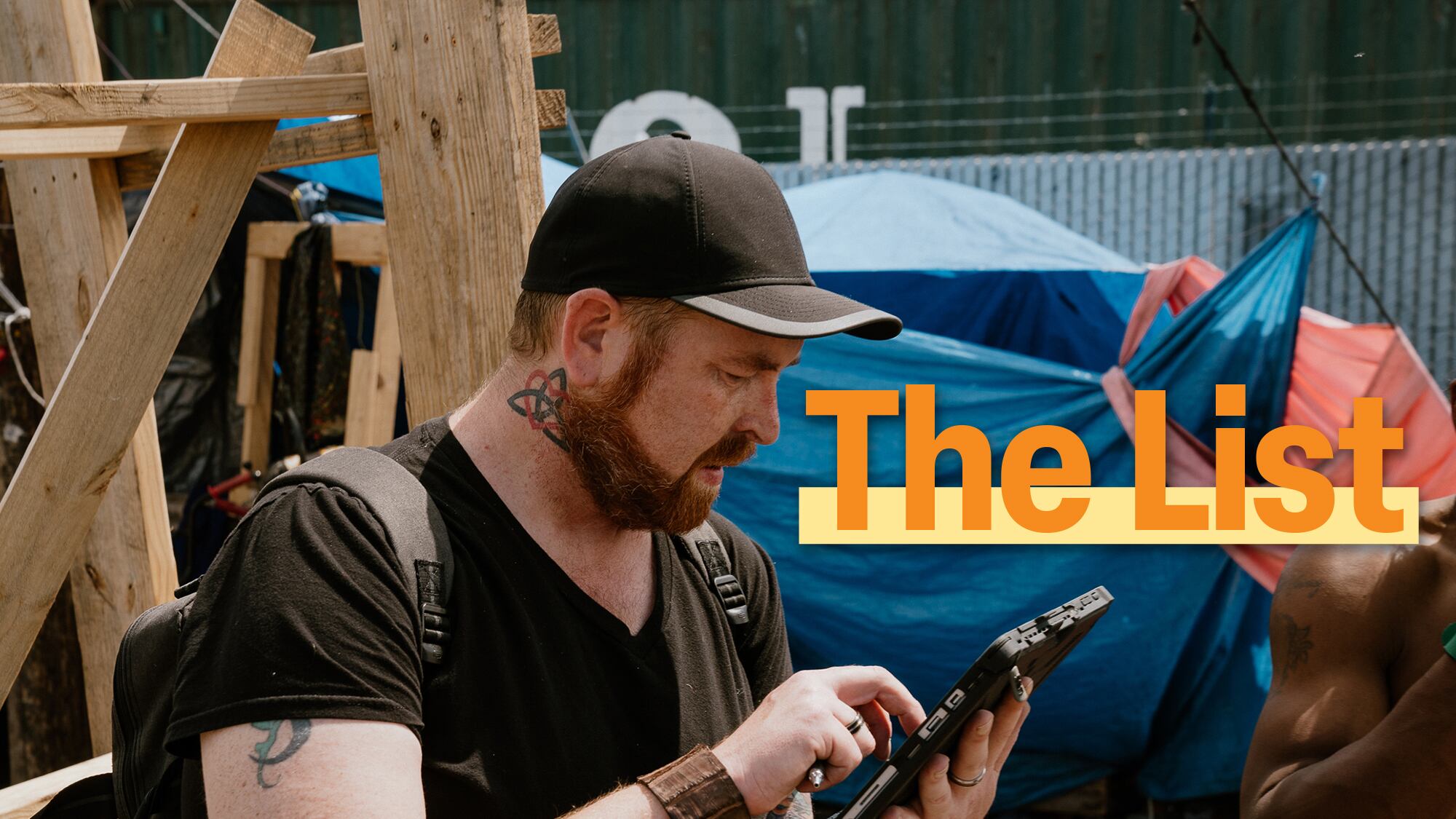Ask Multnomah County Commissioner Sharon Meieran how to end the homeless crisis in Portland and she’ll say the city needs a list, by name, of every unhoused person and the reasons they live outside. Portland City Commissioner Dan Ryan will say the same thing.
Only then, they say, can homeless people be matched with what they need to become housed: mental health care, addiction treatment, rent assistance, or job placement.
In November, at the urging of Meieran and Ryan, the city and county joined New York-based nonprofit Community Solutions’ “Built for Zero” program at a cost of $10,000 paid by Kaiser Permanente.
Community Solutions all but guarantees “measurably ending homelessness for entire populations” to produce “an ongoing state where homelessness is continuously rare and brief,” something that seems impossible to Portlanders who feel like they drive by more tents and step over more hypodermic needles every day.
“We believe it is possible to solve homelessness,” Community Solutions representative Alyssa Keil said at a Multnomah County meeting in April. “A lot of people have adopted this belief that homelessness is something we just have to live with and respond to. We don’t believe that.”
Meieran, a longtime critic of Portland’s response to homelessness who’s running for Multnomah County chair, says without a comprehensive “by-name list,” homelessness solutions are scattershot and wasteful.
“Without Built for Zero, I don’t know what the end looks like,” Meieran says. “Is it to build an infinite bunch of housing units even though we don’t have a sense of how many people there are or what they really need?”
Many of Built for Zero’s fans make the program sound like pixie dust that, when sprinkled, causes homeless camps to clear and tents to come down. On its website, Built for Zero itself talks about the “magic” happening once a city has reliable, real-time data.
Its detractors, meantime, say Built for Zero is as heartless as The Hunger Games and as dangerous as a Soviet registry of dissidents. Homelessness is often criminalized, so taking people’s names is tantamount to issuing a warrant for their arrest, or worse.
“Getting everyone’s name on a list makes the hair on the back of my neck stand on end,” says Tera Hurst, who worked on homelessness under Portland Mayor Charlie Hales. “There are too many instances of people ending up on lists and bad things happening to them. My grandmother was a Holocaust survivor.”
Others say having a list of people living outside won’t help until there is enough housing. The city and county’s Joint Office of Homeless Services can know everything there is to know about a person, but all that data won’t build them a house or even get them a spot in a shelter.
“In a housing market like ours, it’s a bold statement to say that data can fix everything,” says Andy Miller, executive director of Human Solutions, which owns 804 low-income units in the Portland area and operates two shelters. “We don’t have enough housing to make use of the rental assistance dollars that we have.”
And what worked in Rockford, Ill.; Chattanooga, Tenn.; and Fremont County, Colo., may not work here. Seattle, San Francisco and Los Angeles—the big West Coast cities with big homeless populations—have yet to sign up with Built for Zero. (Chicago joined in 2015 but has become inactive, Built for Zero says.)
Portland has more homeless people than all but a few of Built for Zero’s other client cities, and because of the mild climate, fewer of them go to shelters or interact with service providers that might learn their names.
In short, Portland is probably asking Built for Zero to accomplish more here than it has almost anywhere else in the country.
Josh Alpert, another former Hales staffer who worked on homelessness, wonders if such an enormous problem can be solved with a single magic bullet. He has since turned his attention to another colossal problem: global warming. “Climate change seems easier,” he says.
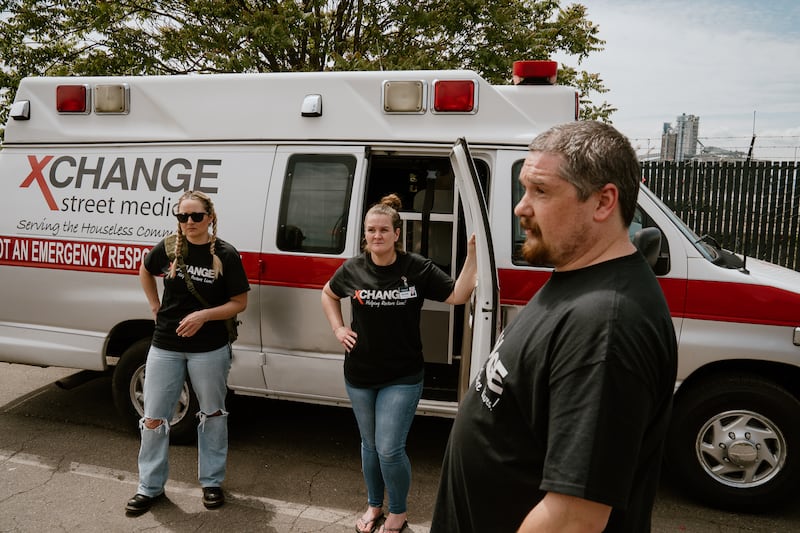
Community Solutions comes highly recommended.
The MacArthur Foundation gave Community Solutions founder Rosanne Haggerty a $500,000 “genius” grant in 2001. Ten years before, Haggerty had turned a decrepit hotel in Midtown Manhattan into low-income housing with 652 glistening units and a gracious lobby, then renovated other buildings, but it did little to dent homelessness in New York City.
So, in 2011, she founded Community Solutions to try and end the scourge altogether. She knew she needed a different approach, says Nate French, an executive at Built for Zero.
“She got a team together that literally went around, talked to every person, put their name on a shared list, and started working the list, person by person, to get them into a housing situation and pretty much eliminated street homelessness in Times Square,” French says.
Last year, MacArthur awarded Community Solutions $100 million for showing “real and measurable progress in solving a critical problem of our time.”
Community Solutions leaders have an abiding love for systems and data that recalls the great technocrat Robert McNamara, who, as U.S. Defense secretary during the Vietnam War, used body counts to measure success.
Built for Zero has numeric targets for reducing homelessness to what it calls “functional zero.” Among the chronically homeless, one group that it targets, that number is 0.1% of the number of people in a city’s most recent Point-in-Time Count of the homeless.
Portland counted 5,228 homeless people on the night of Jan. 26, so functional zero would be just five people.
To be useful, Built for Zero says, a by-name list must be able to tell bureaucrats how many homeless people are moving on and off the rolls, the same way software made by San Francisco tech giant Salesforce Inc. tells an exec how many deals she’s closed. In fact, Built for Zero helps cities display their data through a Salesforce product.
“We push data as the tip of the spear,” French says.
Community Solutions’ strategy is to attack homelessness by groups, usually starting with veterans, then moving on to the chronically homeless, families, teenagers, and single adults, and building a centralized, by-name list for each. Under federal law, a person is considered chronically homeless if they have a disability and have been homeless for 12 months consecutively or on four occasions in the previous three years.
So far, 14 client cities across the U.S. have reached functional zero for one of their target groups where, in the words of Community Solutions, homelessness is rare, is brief when it happens, and never becomes a way of life. Rockford joined Built for Zero in 2015 and, two years later, became the first city to end both veteran and chronic homelessness.
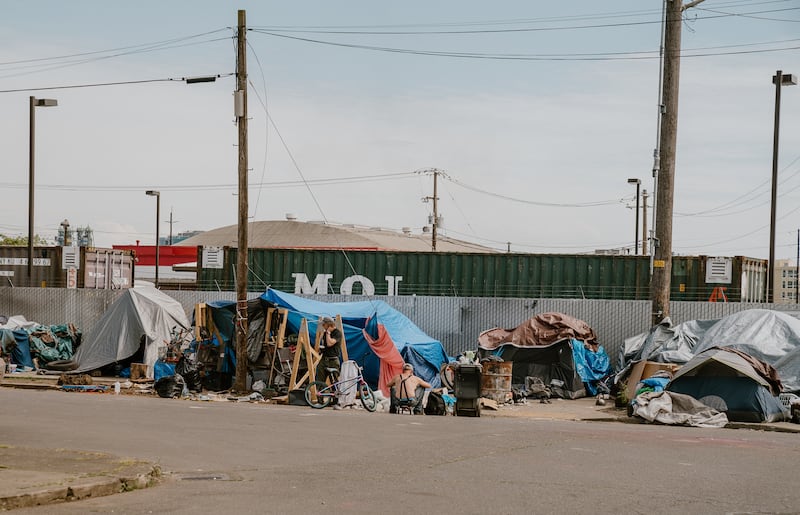
Commissioner Dan Ryan takes credit for bringing Built for Zero to Portland. Introducing the organization at a Feb. 22, 2021, meeting with city and county leaders, he described how he saw Roseanne Haggerty give an “amazing presentation” in Charlotte, N.C., in 2018.
It stuck with him and, in his first week on the job as a city commissioner in September 2020, he called her. After Built for Zero presented its system, the group, which included Meieran, Ryan and Mayor Ted Wheeler, took a vote to press ahead.
Then, nothing happened for nine months, until November, when Portland, Multnomah County and Gresham joined Built for Zero.
County spokesman Denis Theriault says the Joint Office of Homeless Services, the city-county partnership that handles homelessness issues, worked during that time to scope the partnership, assess staffing, and develop a timeline.
The delay still exasperates Ryan and Meieran. Adding to their frustration is the Joint Office’s own attempt at a Point-in Time Count, which Ryan says is largely useless, even though it is federally mandated.
“From day one of my time in office, I have been pushing for real-time data on homelessness,” Ryan said in a statement. “Across the country, it is common knowledge that the methodology behind the Point-in-Time Count is fundamentally flawed.”
But the Point-in-Time Count isn’t the only source of information on who’s homeless in Portland. The Joint Office maintains a database called the Homeless Management Information System, or HMIS. It’s a list of people seeking services that are funded by the federal Department of Housing and Urban Development, and it’s gathered with a detailed questionnaire that asks everything from name and age to whether someone ever exchanged sex for money or suffered heatstroke.
“One of the most frustrating points is that people say we don’t have a by-name list,” says Marisa Zapata, a Portland State University professor who studies homelessness. “But we do. It’s just not doing everything that the Built for Zero list might do.”
The difference between HMIS and Built for Zero is that Built for Zero wants the names of everyone in a city who is homeless, not just the ones who are seeking HUD-funded services. And it wants outreach workers who otherwise ask about personal welfare to collect data during early encounters. That’s what riles privacy advocates.
“It makes me incredibly uncomfortable that focusing on getting people’s names and information, even if they don’t want to engage in services, is a priority,” Zapata says. “I don’t need anybody’s name to produce housing faster. I need to know how many people there are to know how many units to build.”
While other Portland leaders don’t voice Zapata’s reservations, Built for Zero has yet to get their full-throated support.
In April, County Commissioner Jessica Vega Pederson, who’s running against Meieran for county chair, said she was “very excited” about the partnership, and Mayor Ted Wheeler supported going forward with it last year. A spokesman for City Commissioner Mingus Mapps said his boss had no comment on it because Mapps doesn’t oversee the Joint Office. City Commissioner Carmen Rubio had no comment either.
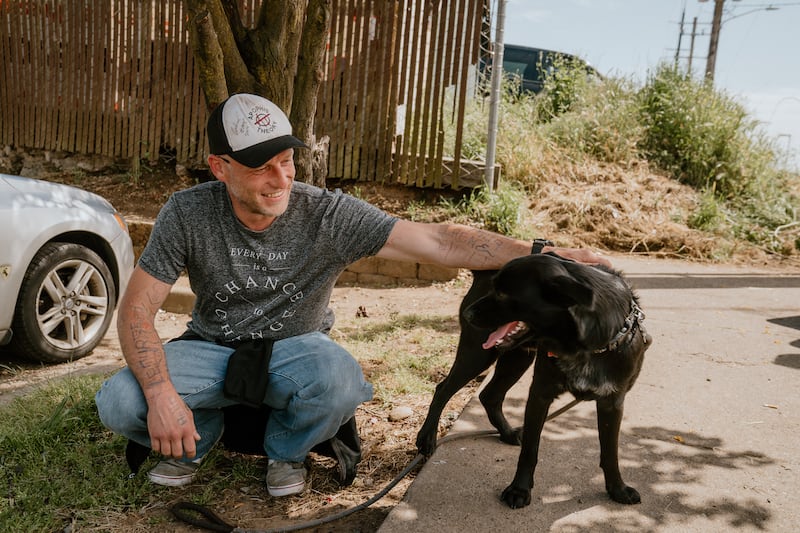
So how is Portland doing with Built for Zero so far?
It has yet to collect a single name beyond what it gets through existing HUD questionnaires. That’s because the Joint Office is still deciding which questions to use on its survey of homeless people.
“The next stage of the work is really, how do we design this?” says Shannon Singleton, who took over the Joint Office in March. “You’re going to have people who don’t feel comfortable with a list. And it’s about having really honest and authentic conversations with people, but also being clear about how we protect people’s information and privacy.”
Clues about whether Built for Zero will work in Portland might be found across the river in Vancouver, Wash. There, Council for the Homeless, a local advocacy organization, rallied a dozen service providers to join Built for Zero in September 2020.
Almost two years later, Clark County has a more streamlined system for finding homeless people and getting them connected to services, says Cody Shaw, coordinated outreach manager at Council for the Homeless. Advocates for the homeless dispensing money from an alphabet soup of acronymed programs are working better together too, Shaw says.
“We have a more focused effort,” he says. “Our old process, especially with outreach, had been about putting out fires.”
Shaw and his team of outreach workers are out every week talking to homeless people about the minutiae that keeps them from being housed. On a warm day in June, Shaw goes down to a homeless camp on 12th Street, near a metal salvage yard.
He meets a team of volunteer nurses from XChange Street Medicine who treat a lot of foot wounds and other ailments from a used ambulance they bought recently.
Shaw greets people he sees every week. He gives one person bus fare so she can go to the laundromat. Other days, he’s quashing arrest warrants, paying overdue bills, fixing credit reports, and getting birth certificates and Social Security cards.
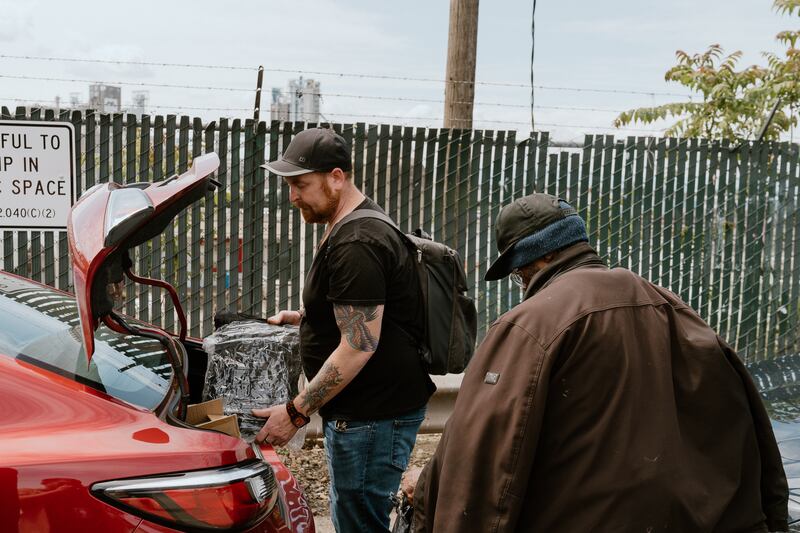
So how is Clark County doing? Is it on track to end functional homelessness for veterans or the chronically homeless the way Rockford did?
Not quite. The Council for the Homeless team was making progress until last year, when, because of COVID, local agencies slowed the clearing of camps and they began to look more permanent. Alarmed, elected officials appropriated more money for outreach workers, boosting the number from seven to 30. More outreach found more homeless people, so the numbers grew instead of going down.
In a data-centric system like Built for Zero, that didn’t look good, even if it meant more people might be served.
“We now have the capacity to serve more of the area and find more people,” says Melissa Baker, coordinated entry director at Council for the Homeless. “That’s good because if we don’t know they’re there, we can’t serve them. It did make our numbers go back up. But we know the truth about the homelessness in our community.”
Built for Zero encourages experimentation, and one of Clark County’s trials may contain a warning for Portland. Council for the Homeless decided to try and get the names of everyone in a specific area, and it chose Burnt Bridge Creek, a long greenspace with a trail that looks a bit like Portland’s Springwater Corridor. It was a bust. The county housed maybe two people.
“They’re there for a reason,” Baker says. “They’re hidden. They don’t want to talk to us. It didn’t work at all. We learned to prioritize folks who are ready to engage.”
One person who was ready, and who has benefited from Clark County’s effort, is Kevin Fuller, 40. Standing shirtless near the camp, Fuller describes how he survived a bout of colon cancer and spent two years living in a car and in tents. Legal issues dogged him, too, but he says he can’t talk about those.
In February, he got a spot in a men’s shelter just up the street from the camp that’s run by a nonprofit called Share. A month later, he got a one-bedroom apartment nearby.
“It’s fucking fabulous,” Fuller says. “Most people I know are jealous of my place.”
Fuller says he’s never heard of Built for Zero, but that’s not surprising. Built for Zero sometimes calls itself “an operating system for ending homelessness.” The operating system on a computer is invisible to most users, too. What they see are the applications: email, web browsers, calendars, and word-processing programs.
What Fuller sees are the services coordinated by Clark County, with help from Built for Zero: a shelter, medical care, housing, and—starting this week—a job. He’s going to work for Talkin’ Trash, a program that pays people who are homeless or have been, like Fuller, to pick up trash around the city. They get life skills training, too.
Built for Zero worked for Fuller. To fulfill its promises to Portland, it just has to work for 5,000 people like him across the Columbia River.
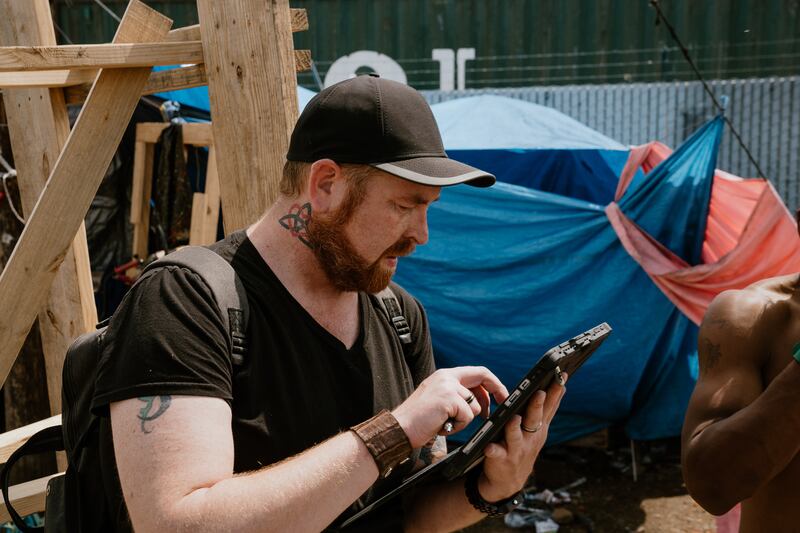
The Rockford Files
Built for Zero communities can use the federally mandated Homeless Management Information System as the raw material for their by-name lists, but they don’t have to.
Rockford, Ill., one of the first cities to join Built for Zero when it was founded in 2015, decided to bypass the federal system for counting homeless people and build a better one using a simple tool: Google Sheets.
The HMIS system didn’t update fast enough, says Angie Walker, homeless program coordinator for the city of Rockford. “When I pull up HMIS, it’s yesterday’s data,” Walker says. “Our by-name list is real time.”
Like many communities, Rockford tackled veteran homelessness first, then moved on to the chronically homeless. That turned out to be much tougher.
“Veterans would just kind of come to us or go to the VA,” Walker says. “We didn’t really have to go out looking for them.”
Even in Rockford, which has a climate that discourages year-round camping, it was harder to reach the chronically homeless.
“We found out real quick that they weren’t going to just show up at our office,” Walker says. Getting data that met Built for Zero’s standards would take some doing. Walker realized Rockford didn’t have enough people reaching out to the homeless, so she started doing it herself.
She knew homeless people often bought alcohol at South Main Food & Liquor and gathered under a shade tree behind a nearby auto-body shop. She started going there every day and talking to the group, cajoling them to sign up for city services.
Walker’s entrepreneurial efforts worked. Rockford reached functional zero for the chronically homeless in 2017.
When Walker signed Rockford up with Built for Zero, the city had about 700 homeless people. Now, Walker says, it has about 200, a 71% decrease in seven years. Walker knows who all of them are. About 120 are single adults, 14 are youth, and there are about seven families.
“You can do the same things we did, just on a larger scale,” Walker says. “Everything we’ve done through Built for Zero is scalable.”
